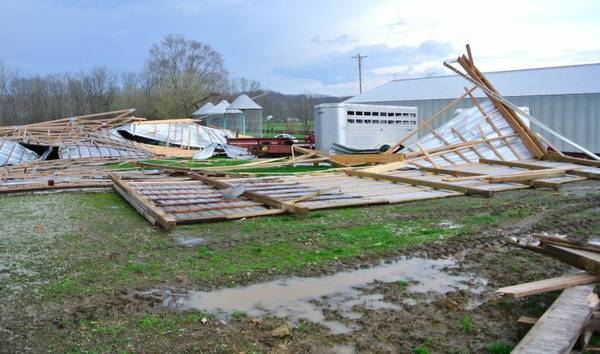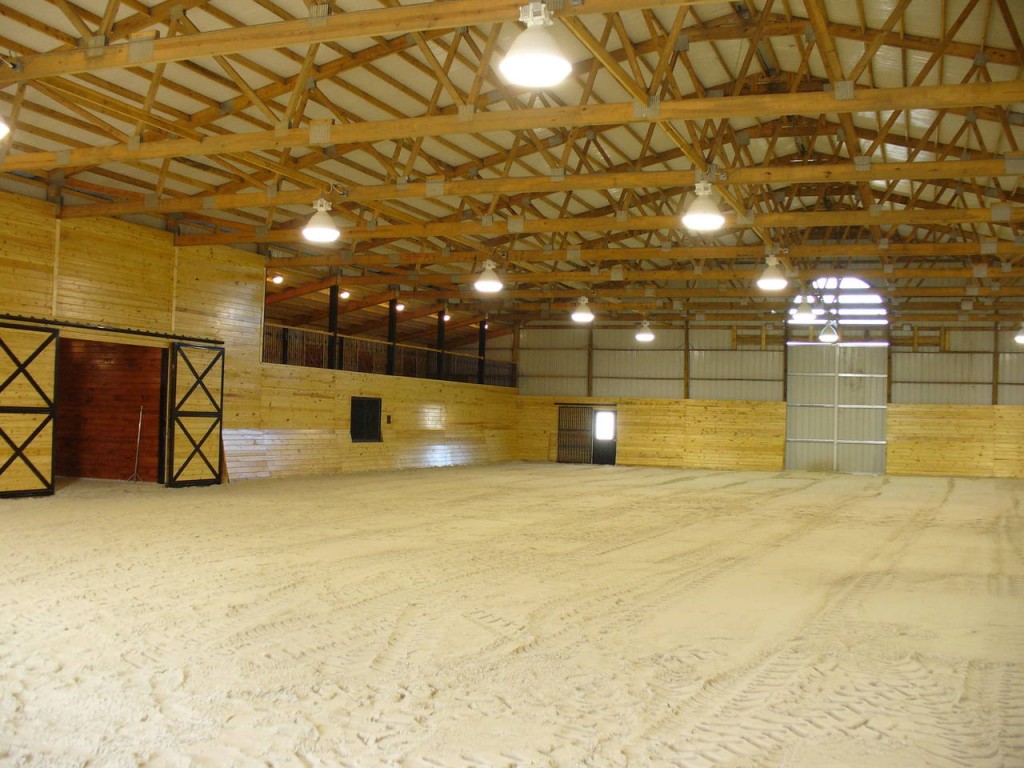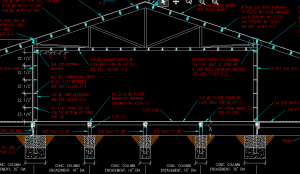Fall Up, Go Boom
What? Sir Isaac Newton pretty much confirmed things do not fall up.
Well, this building did not actually “fall” up – it was sucked out of the ground. How would I know this? Look at the ends of the columns which are lying on the ground. There is no concrete attached to the bottom of the columns, nor is any method for preventing uplift even obvious to the more than casual observer.
In review of the NFBA (National Frame Building Association) Post-Frame Building Design Manual (January 2015) the issue of column uplift is all but ignored. Beginning with the end of Page 5-37, it is concluded two pages later. Options for preventing uplift are really not addressed.
For decades we, if not many other post frame designers and builders, have relied upon the bond strength between concrete and wood in designing column embedment to prevent uplift issues. More can be read about concrete to wood bond strength here: https://www.hansenpolebuildings.com/2013/04/pole-barn-post-in-concrete/.
I’ve expounded previously upon the use of nail on truss plates for assisting in uplift construction (https://www.hansenpolebuildings.com/2013/04/truss-plates-for-column-uplift/).
There truly is very little information available. Of all places, I did find some relevant information on the City of Hendersonville, Tennessee website (www.hvilletn.org):
“Column uplift protection: Columns shall have uplift protection by one of the following methods:
1. Two 2x6x12 inch column uplift protection blocks attached to each side of the base of the column. The column uplift protection blocks must be placed horizontally, attached per Table 5 and comply with Section R317.
2. 12 inch high, concrete collar poured on top of footing around the post, with 2- #5×9 inch rebar placed through the post at 3 inches and 9 inches from bottom of post in opposite directions. The rebar ends shall be installed in accordance with ACI 332 for the specified distance in inches from contact with the soil.”
Table 5 mentioned above happens to be five 16d hot dipped galvanized nails into each block.
While I was researching for this article, I happened upon an example for preventing uplift in an all steel building. The building in this case was a 60 foot span and steel frames every 25 feet. In this case the design footing was eight feet square by 3’8” in depth!!
The all steel building is going to have footings which take nearly nine yards of concrete per bearing location!! This is near the capacity of a pre-mix concrete truck, per one end of each frame!
Getting back to the post frame building design solution, our engineers have determined reliance upon the concrete to wood bond strength only is not quite as conservative as they might like.
The solution – Hansen Pole Buildings, LLC engineered post frame buildings now have added the nail on uplift plate tot the roof supporting columns to tie into the concrete column encasement.
The investment is minimal and it does afford some added insurance of success in preventing uplift.










